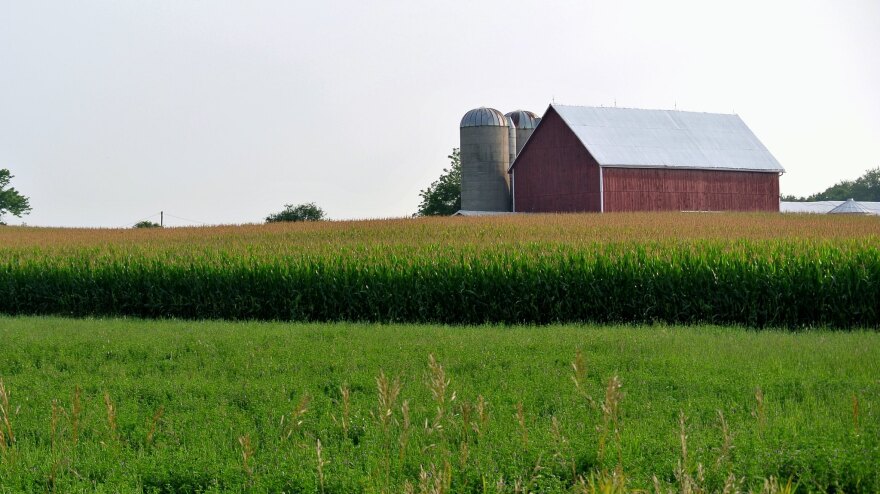Farmers can now apply for federal assistance to offset loss of income due to the trade war.
Applications opened yesterday for the Market Facilitation Program. It’s the second year the Trump administration has offered supplemental payments to farmers while continuing to impose tariffs on China — along with Mexico, Canada and other countries.
President Trump authorized the U.S. Department of Agriculture to provide up to $14.5 billion in direct payments to producers for 2019. That’s up from $9.6 billion spent on direct payments in 2018.
But the way the U.S. Department of Agriculture is calculating how much money farmers get is different this year.
In 2018, agricultural producers were paid a per-bushel rate based on the previous year’s market losses. This time around, payouts are based on the number of acres planted and the location of the farm.
Payments will range from a minimum $15 per acre to a maximum $150 per acre.
While farmers in Illinois and across the country know how much each county expects to receive, it’s not yet clear how the USDA got to those numbers. Chief Economist Rob Johansson is expected to provide more information on the funding formula in the coming weeks.
Rod Weinzierl, executive director of the Illinois Corn Growers Association, said in the meantime, he expects there will be some confusion from farmers who live near the border of neighboring counties.
“I’m sure that we’ll hear from producers saying that ‘the rate that I get in this county is different, but I farm right on the county line and the rate is this over here … how come they’re different?’” he said. “We’re just not in a position to help answer that question until more detail comes out.”
Weinzierl said last year’s funding formula did not account for exports of all corn products — things like corn gluten feed and ethanol were left out. He said that should be fixed under the new formula.
But he said what farmers ultimately want is an end to the trade war.
“By far, the vast majority of our members are hopeful and would prefer that these trade agreements get done, so that they can receive the value of their product from the market and not have the supplemental payments that come to them that, from a public standpoint, optically doesn’t look good,” he said. “But from a farm income standpoint, it’s literally keeping some farms in business.”
Ron Moore with the American Soybean Association echoed that sentiment.
“Government intervention into our markets has caused this disruption — and a decrease in all commodities,” Moore said. “Farmers do a really good job of responding to the marketplace, if nothing intervenes. This is an intervention that we need to get resolved as soon as possible.”
One agricultural economist told the Associated Press that the old, per-bushel funding formula weighted heavily toward payment to soybean farmers, who were among those hit the hardest by retaliatory Chinese tariffs. University of Illinois agricultural economist Scott Irwin said the new formula should be mean payments are weight more fairly to all crops.
Moore said it’s too soon to tell how equitable the new formula actually is.
“Until we really know how they calculated the rate for each county — you know, we’re thankful that it’s coming, but we’d just like to make sure we can look at it objectively and see that all farmers are being treated fairly,” he said.
The MFP payments are being split in three categories: non-specialty crops (including corn and soybeans), specialty crops such as nuts and fruit, and hogs and dairy producers. Farmers are eligible for up to $250,000 of payments per category with a $500,000 limit across all categories.
USDA spokesperson Dirk Fillpot said the department received 1.03 million applications as of Monday morning, accounting for $8.59 billion that has been paid to farmers. Illinois was top five states with the most applications.
Copyright 2021 WCBU. To see more, visit WCBU. 9(MDIwMjIxMDA0MDE0Mzk4NDIzNjA0OGQ5Yg001))


